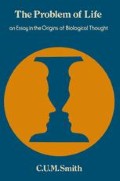Abstract
Man a Machine: a famous title, a famous book. La Mettrie, who published his work in 1748 (1), was in many ways a typical thinker of the European enlightenment. Like Voltaire, he attracted the wrath of churchmen. Like Voltaire, he was forced to flee from his orthodox enemies to a secular protector. Like Voltaire, he created enemies among his conservative countrymen by pointing out the seeming illogicalities of their thought, by poking fun at the absurdities in their intellectual position. And the conservatives, not as deeply schooled as they might have been, attempting to defend a position whose origins and structure had been almost forgotten, or perhaps never been made explicit, reacted with anger to hide their bafflement: reacted with anger at what seemed to be the easy superficiality of la Mettrie’s philosophy, and yet were mostly unable to show exactly where it was wrong and why it was not a profound alternative to their own thought. For la Mettrie seemed merely to have taken the Cartesian system to its logical terminus. Whereas Descartes conceived the living world to be composed of two categories of beings — animals which were (mere) mechanisms, and humans which had superadded to the mechanism a soul — la Mettrie saw animals and humans as one creation: machines all.
Preview
Unable to display preview. Download preview PDF.
Notes
J.O. de la Mettrie, L’Homme Machine, Leyden (1748).
J-J. Rousseau, Discours sur l’Origine de L’Inégalité, Paris (1755); Classiques Larousse, Paris (1939), pp. 35–6.
W.Wordsworth, Lines Composed a Few Miles Above Tintern Abbey (1798).
Kant’s three important critiques — the Critique of Pure Reason (1781) (trans. J.M. D. Meiklejohn)
C.S.Sherrington, Goethe on Nature and on Science Cambridge University Press (1949).
L.Thorndike, A History of Magic and Experimental Science, (1929–1956), vol. 5, chapter 1.
J.W. von Goethe, Faust (trans. B. Taylor), World’s Classics Oxford University Press (1932), lines 1935–9.
A. Arber, Goethe’s Botany, Waltham, Massachusetts (1964).
P. Hume-Brown, The Life of Goethe, vol. 2, John Murray, London (1920), p. 441.
J.W. von Goethe, Einwirkung der neueren Philosophie; quoted in E. Cassirer, ibid. (1963).
L. Agassiz, The Structure of Animal Life, Scribner, New York (1866), p. 122.
See E. Perrier, La Philosophie Zoologique avant Darwin(ed. F. Alcan), Ballière, Paris (1884), preface, 10.
L. Oken, Lehrbuch der Naturphilosophie Berlin (1809–1811);
A. Tulk, Elements of Physiophilosophy, (Ray Society, London 1847), p. 492.
E. Serres, Précis d’Anatomie Transcendente, Paris (1842), p. 91.
A. Weismann, The Evolution Theory, vol. 1 (trans. J.A. and M.R. Thomson), Edward Arnold, London (1904), p. 28.
T.H. Huxley, On the theory of the vertebrate skull, Proc. Roy. Soc., 9 (1858), 381–457;
C. Darwin, The Origin of Species, John Murray, London (sixth edition, 1872), p. 260.
Author information
Authors and Affiliations
Copyright information
© 1976 C.U.M. Smith
About this chapter
Cite this chapter
Smith, C.U.M. (1976). The Romantic Reaction. In: The Problem of Life. Palgrave, London. https://doi.org/10.1007/978-1-349-02461-2_18
Download citation
DOI: https://doi.org/10.1007/978-1-349-02461-2_18
Publisher Name: Palgrave, London
Print ISBN: 978-1-349-02463-6
Online ISBN: 978-1-349-02461-2
eBook Packages: Biomedical and Life SciencesBiomedical and Life Sciences (R0)

